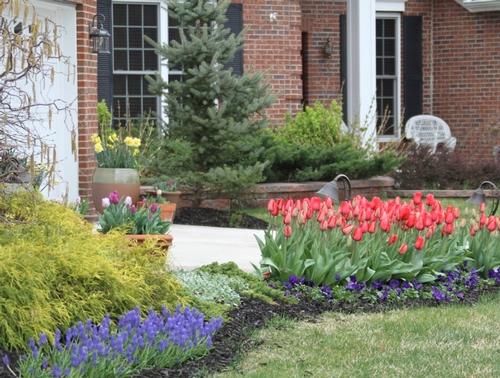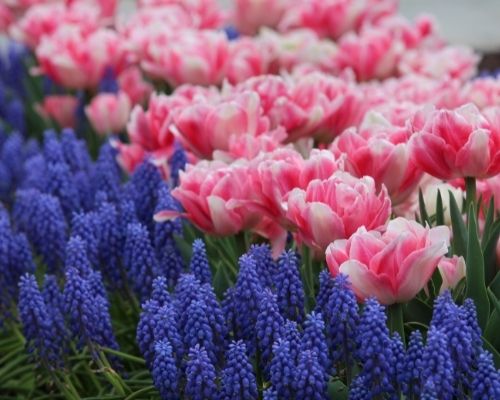Wrap Your Home in Colorful Spring Flowers
Spring-flowering bulbs such as tulips, daffodils, crocus and hyacinths, can transform an ordinary yard or garden into a showplace that’s the talk of the neighborhood. These cheery flowers are in full bloom when most other plants are still waking up. Spring bulbs aren't fazed by cold weather, are not fussy about soil, and are happy to grow in sun or shade. Best of all, spring-flowering bulbs are easy and dependable. Just plant them in the fall and you can look forward to an incredible display of color in the spring.
Every yard has room for spring bulbs. Here are some suggestions for where to plant them as well as tips and tricks to ensure a great spring show.
Entryways and Foundation Plantings
Spring flowers lift the spirits of everyone who passes by. Consider lining your front walk or shared sidewalk with an assortment of colorful tulips. An entryway is the perfect spot for a rainbow of spring bulbs such as tulips, daffodils, hyacinths and muscari. Enjoy the opportunity to compose a new and different show each year. To watch a video about planting bulbs along a front walk, click HERE.
Shrubs are a good backdrop for spring bulbs. Small bulbs, such as crocus and scilla grow just a few inches tall and can be planted under low branches. Spaces between shrubs are good spots for clusters of daffodils or tulips. Plant small bulbs in groups of 20 to 30 bulbs and larger bulbs in groups of 10 or more.
Hard-to-Mow-Areas
Steep or rocky slopes that are difficult to mow can be a terrific place for daffodils. By combining daffodils and daylilies, you can keep the area looking good from spring through fall. Daylilies will grow almost anywhere and need virtually no care. Their big, strappy leaves will also hide the daffodils’ spent foliage.
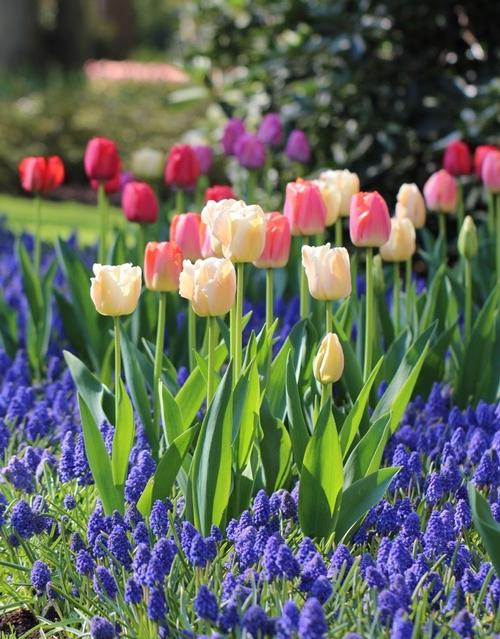
Beneath Trees and In the Lawn
Spring bulbs look wonderful planted beneath the branches of a large shade tree. Sometimes shallow tree roots make it difficult to plant close to the trunk. If so, simply move out a few feet and use a trowel to create planting pockets for small bulbs such as crocus, scilla and chionodoxa. The further you get from the trunk, the easier it will be to plant. Bulbs can push their way up through grass, groundcovers or mulch, and over time they will multiply to create a carpet of color. See how to do it in our video: Planting Fall Bulbs Under Trees.
Though not all spring bulbs grow well in a lawn (don't try it with tulips and hyacinths), others will thrive and happily spread their color far and wide. Bulbs that grow well in lawns include Siberian squill, chionodoxa, crocus, snowdrops, puschkinia, daffodils and iris reticulata. See a video HERE.
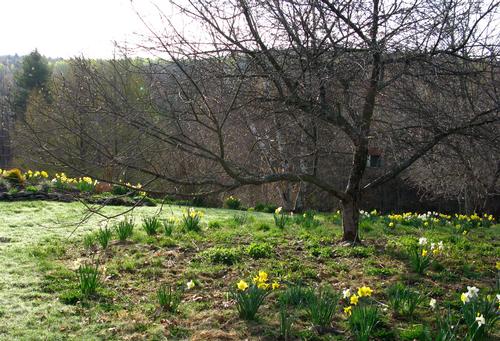
Border Plantings
For big, bold color, nothing beats tulips – especially when they are planted in large numbers. A planting bed with room for a hundred bulbs will give you an unforgettable display. Planting beds can be located at the edge of your lawn, along a walkway or in other prominent locations around your yard. When the spring show is over, you can replace the bulbs with showy, summer-blooming bulbs such as dahlias and cannas.
Perennial Gardens
Spring bulbs start blooming in March and continue right through early May. This is long before most perennial gardens have started to show color. Tuck handfuls of scilla, chionodoxa and other small bulbs into the front of your flowerbeds. Nestle tulips, hyacinths and dwarf daffodils in pockets between perennials. As the perennials fill out, their leaves will hide the bulbs' fading foliage.
Containers
Most bulbs grow well in containers as long as the pots have drainage holes and the soil inside is not allowed to freeze. Plant the bulbs in the fall and keep the soil cool (35 to 45 degrees F) and just slightly moist for 12 to 15 weeks. In growing zones 7-8, the containers can be left outdoors. In colder zones, you'll need to protect the pots from freezing. When the chilling period is over, the pots can be displayed almost anywhere around your home or garden.
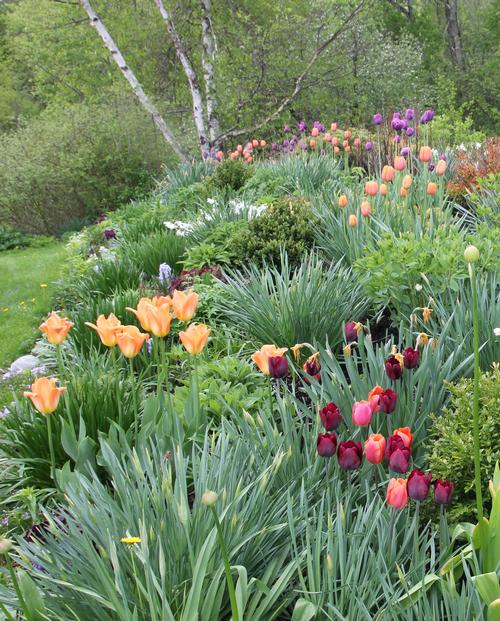
Tips and Tricks for a Great Spring Show
• Tulips and daffodils look best when they are planted in large groups, with at least a dozen bulbs of the same variety in each group. For the biggest impact, stick with a single color theme or one combination. The more bulbs you plant, the better the show.
• It takes a lot of small bulbs to create a big impact -- especially from a distance. Small bulbs should be planted in groups of 50 or more of the same type of bulb. Though mixed plantings can be fun, a single swath of color is usually the most effective.
• Don’t plant your bulbs in straight rows or in a tight circle, unless you're planting a very formal garden. That said, tulips and hyacinths look best when the bulbs are planted the same distance apart. Daffodils and smaller bulbs look better when the distance between the bulbs is irregular.
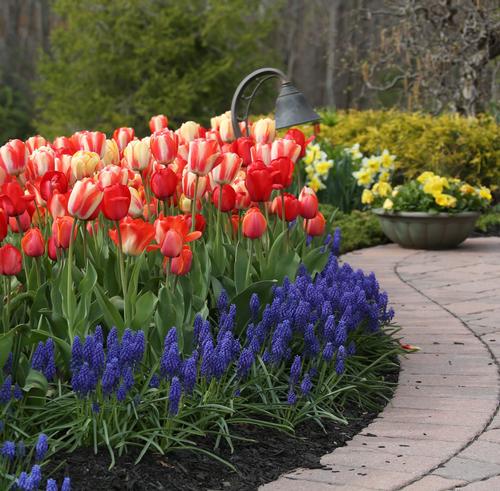
• Before you plant, always check the package so you know how tall the bulbs will grow. As a general rule, taller bulbs should be planted toward the back and shorter bulbs toward the front. Tall alliums are an exception, because their stems hold the flowers high above surrounding plants.
• Groundcovers and low-growing annuals and perennials can add to the beauty of spring bulbs. Pansies, primroses, creeping phlox and vinca are just a few of the combinations to consider.
• Planting several different types of bulbs with different bloom times (early spring, mid-spring, late spring), will give you a succession of flowers that can span two to three months. Start the season with snowdrops and crocuses, and close it out with late tulips and alliums. For details, see our bloom time chart HERE.
